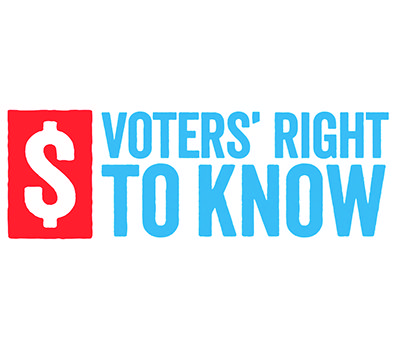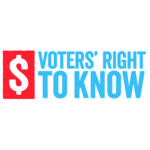The health and integrity of our democracy depend critically on the ability of voters to make informed decisions at the ballot box and hold their elected officials accountable. This means that as voters consider the many messages seeking to influence the way they vote and engage with government, they must be able to know the original sources of money behind paid political messages in order to properly judge their credibility.
The Voters’ Right to Know Project is a nonpartisan effort to promote the transparency and accountability of American politics by advancing effective state-level policy surrounding the disclosure of political spending across all media platforms. We advocate for states to adopt a comprehensive set of solutions that together comprise a standard of transparency policy, beginning with the establishment of a groundbreaking state-level constitutional right.
A constitutional “right to know”
81% of American voters believe they should have a right to know the money behind elections. By establishing the people of a given state’s constitutional right to know in a timely and easily accessible manner the source, quantity, timing, and nature of resources being used to influence their elections, we will create a qualitative standard of disclosure that exists independent of any particular medium of communication or campaign practice. With a constitutional “right to know” in place, there will be an unassailable public mandate for the state legislature to pass laws implementing and maintaining this qualitative standard, guided by the following policy principles.
- Better define the expenditures that require transparency.
The lack of disclosure rules for online political advertisements has garnered much attention. However, even on media platforms that do require disclosure, the current definitions of which paid messages should be disclosed to the public are unrealistically narrow. Current requirements for broadcast only cover ads that contain certain “magic words” like “vote for” or “vote against”—known as “express advocacy”—or those that explicitly refer to a known candidate 30 to 60 days before an election—known as “electioneering” communications. Many paid political messages intentionally avoid these narrow criteria, allowing them to sidestep disclosure requirements. The definitions of which ads require transparency should be improved so that voters can know the source of money behind any paid message intended to influence their opinion on Election Day. - Define the information that should be reported.
Whenever an entity makes a political expenditure above a certain threshold, it should have to report certain key pieces of information about that expenditure to the relevant election authority in a standard, structured format. Likewise, entities receiving political expenditures should have to similarly report key pieces of information about payments or contributions received. Reported information should include:
○ The date and total amount of the expenditure;
○ The name and political identifier (e.g., a political committee ID or tax identifier) of the entity making the expenditure;
○ The political target (i.e., which candidate or ballot measure the expenditure is intended to support or oppose);
○ A record of any advertisement copy associated with the expenditure;
○ The medium/platform on which any associated advertisements were run;
○ The market(s) and demographic(s) to which any advertisements were targeted. - Trace spending to true, original funders.
It is common practice for special interests to hide their political spending from public view by funneling money through shell organizations and other financial apparatus that are not subject to transparency requirements. Any entity that spends money above a certain threshold to influence political outcomes, or provides funding to an entity that spends money in such a way, should have to to disclose the most recent, original, true source of its funds, directly proportional to the amount of the political expenditures made. - Make data accessible.
It is essential that all reported information about expenditures and funding sources be stored in a centralized, public database that allows voters to easily access both detailed records as well as summary information about a given entity’s expenditures and funding sources. As requirements for reporting of information about expenditures improve, any new pieces of information that are reported must be cleanly integrated into the schema of this centralized, public database. - Link ads to funders.
In order to bridge the gap between information that has been reported and the voting public’s awareness of said information, paid political messages should have to display a clearly accessible, reliable pathway to information about the expenditure and its original funding sources. Precisely what the display of this pathway should look like should be research-driven, taking into account factors such as the particular medium or platform by which the paid political message is being conveyed, as well as the particular jurisdiction in question. - Create meaningful enforcement mechanisms.
In order to ensure compliance with rules implementing the principles of transparency described above, a given election jurisdiction should designate a regulatory authority that is responsible for maintaining information records, investigating possible violations, and carrying out enforcement actions when a violation has been determined, and should provide the designated authority with adequate staffing and resources to perform these functions. Penalties levied for violations of transparency rules should be proportional to the amount of the expenditure(s) to which they are related.
State-Specific Priorities




